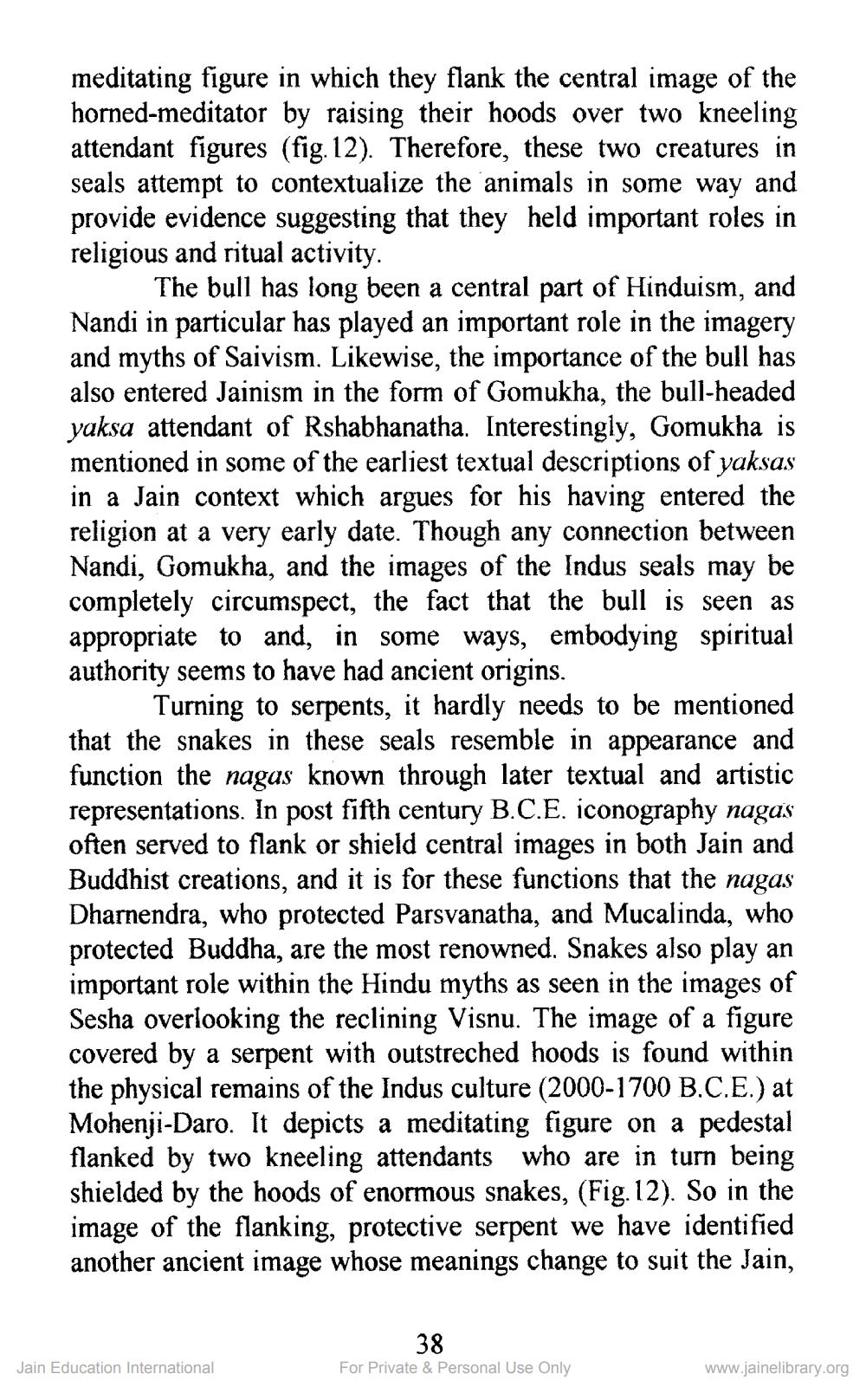________________
meditating figure in which they flank the central image of the horned-meditator by raising their hoods over two kneeling attendant figures (fig. 12). Therefore, these two creatures in seals attempt to contextualize the animals in some way and provide evidence suggesting that they held important roles in religious and ritual activity.
The bull has long been a central part of Hinduism, and Nandi in particular has played an important role in the imagery and myths of Saivism. Likewise, the importance of the bull has also entered Jainism in the form of Gomukha, the bull-headed yaksa attendant of Rshabhanatha. Interestingly, Gomukha is mentioned in some of the earliest textual descriptions of yaksas in a Jain context which argues for his having entered the religion at a very early date. Though any connection between Nandi, Gomukha, and the images of the Indus seals may be completely circumspect, the fact that the bull is seen as appropriate to and, in some ways, embodying spiritual authority seems to have had ancient origins.
Turning to serpents, it hardly needs to be mentioned that the snakes in these seals resemble in appearance and function the nagas known through later textual and artistic representations. In post fifth century B.C.E. iconography nagas often served to flank or shield central images in both Jain and Buddhist creations, and it is for these functions that the nagas Dharnendra, who protected Parsvanatha, and Mucalinda, who protected Buddha, are the most renowned. Snakes also play an important role within the Hindu myths as seen in the images of Sesha overlooking the reclining Visnu. The image of a figure covered by a serpent with outstreched hoods is found within the physical remains of the Indus culture (2000-1700 B.C.E.) at Mohenji-Daro. It depicts a meditating figure on a pedestal flanked by two kneeling attendants who are in turn being shielded by the hoods of enormous snakes, (Fig. 12). So in the image of the flanking, protective serpent we have identified another ancient image whose meanings change to suit the Jain,
38
Jain Education International
For Private & Personal Use Only
www.jainelibrary.org




